"Another car maker admits to getting things wrong with emissions testing. Does that mean brand loyalty evaporates? Mitsubishi's Lancer Evolution was never a strong contender for 'green car of the year'. But we still love it. Mitsubishi might not be "

Mitsubishi EVO
The Mitsubishi EVO. Where to start?! Throughout its 23-year history, the EVO name has been legendary for the Mitsubishi brand. And since being phased out back in 2015 – with the last model being produced for eight years – the namesake has become even more of an icon.
Totalling 10 generations in all – it’s been around for a while. Since 1992, in fact. Some could argue that actually there are 12 generations, but I would stress that the infamous Tommi Mak’ variant was but a 6.5, while the 8 got a bit of a facelift with the MR.
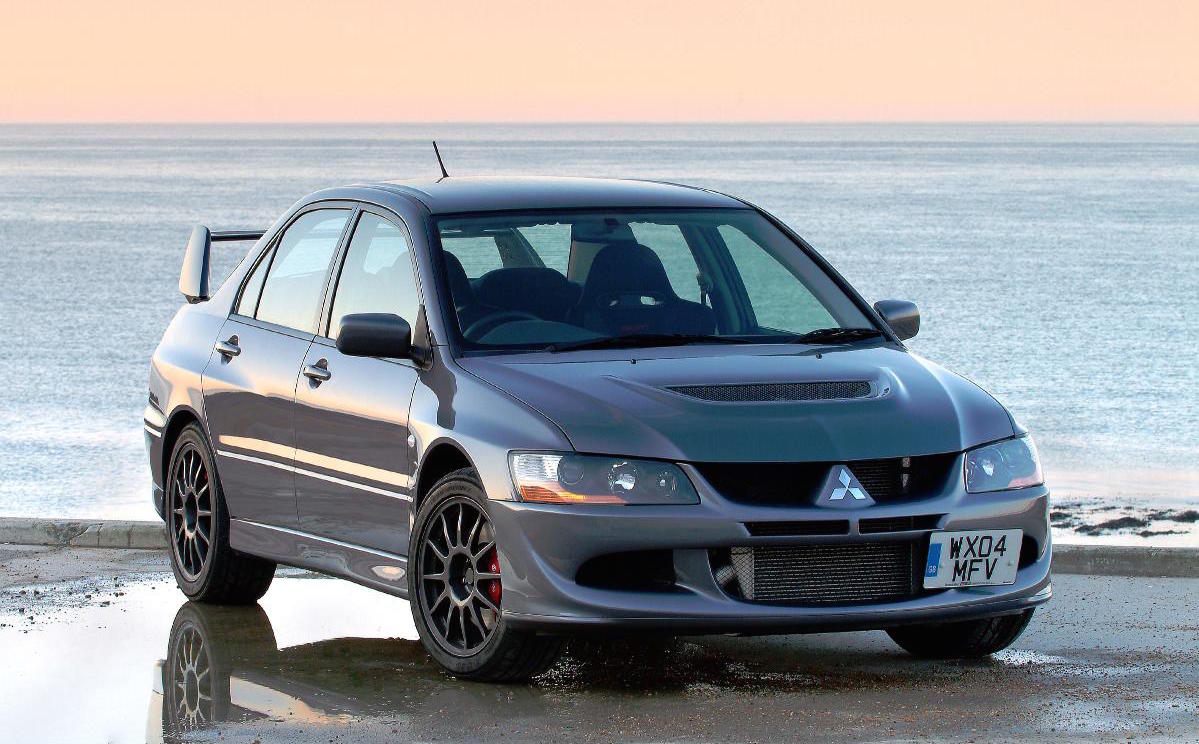
The EVO family features characteristics that have stuck with the name throughout its 23-year history. It’s just one of those cars that you want to drive and drive properly. It’s a driver’s car! Its breadth of power, the rev limiter showing real freedom under your right foot, the sheer preciseness of the gearbox, along with the light compressive stress you feel to the well-balanced chassis as it takes you through a corner. It just makes you want to brush up on those left-foot braking skills (it’s harder than you think) just to experience the full capabilities of the technology.
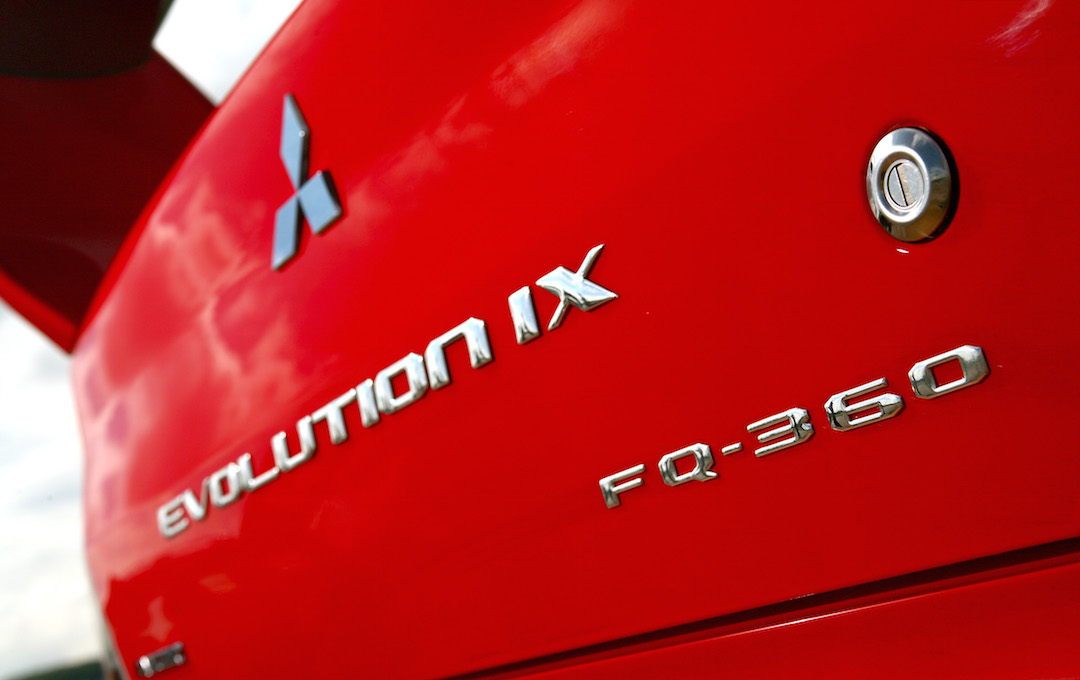
Hold up a minute, though. We’re talking as though the EVO namesake is dead and buried. Well, it’s sort of not. By that I mean, Mitsubishi revealed a concept in the e-Evolution just last year at the Tokyo Motor Show. I wouldn’t get too excited, though, it’s not what you think. It’s no longer the nineties nor the noughties – unfortunately! Mitsubishi calls the new concept the e-Evolution, which says one thing; electric. Oh, and it’s in crossover guise. So, basically, nothing like the legends we once knew.
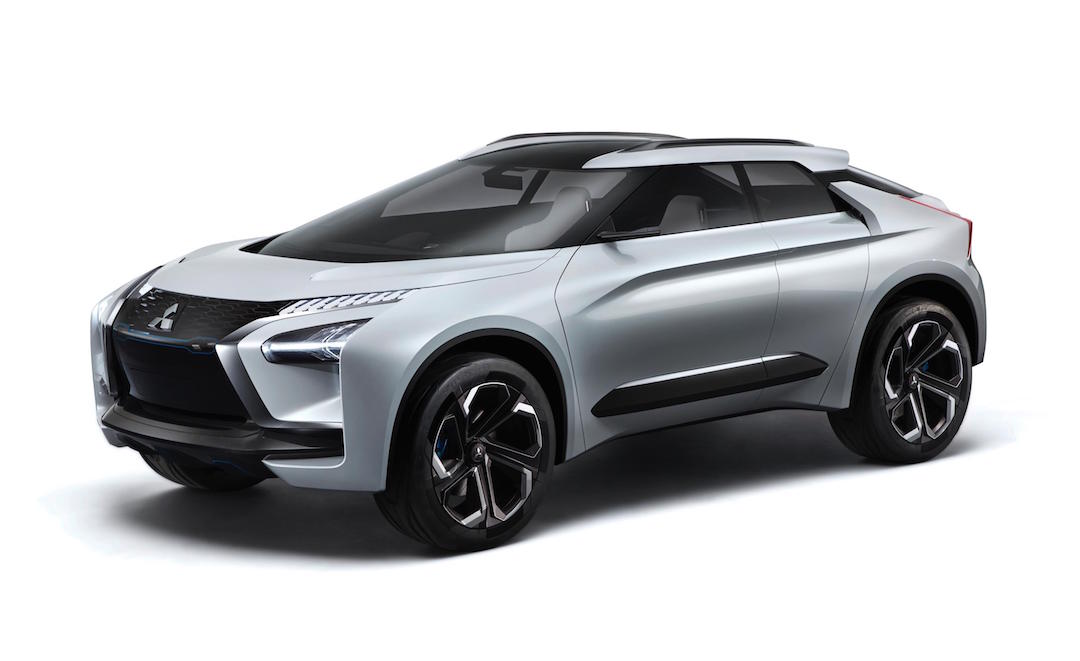
Speaking of EVO legends; let’s take a look at some of the stats, with a few fun facts thrown in about them. We’ll leave you to it; we’re off to buy a second-hand ‘proper’ EVO!
The EVOlution:
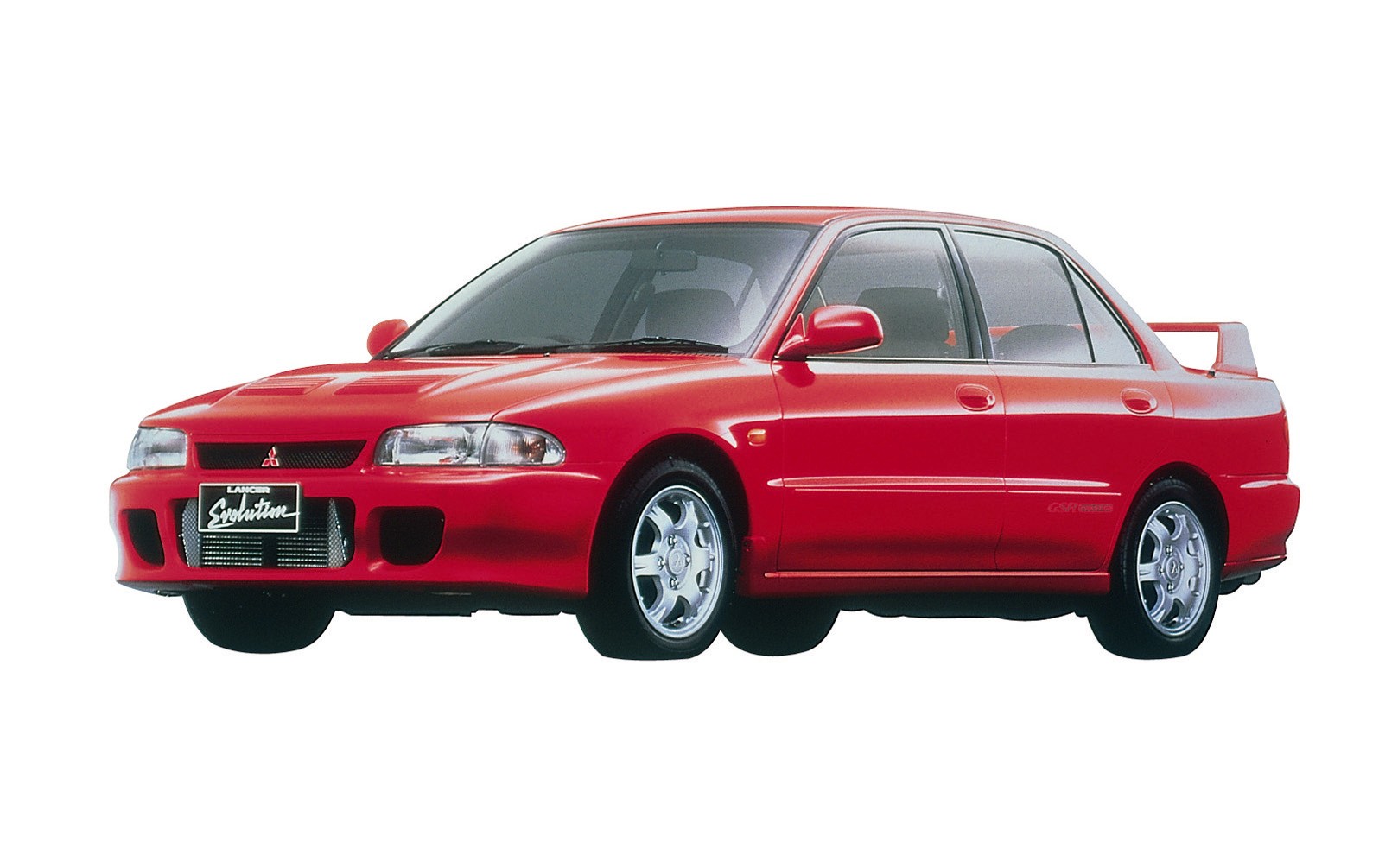
Evolution I (1992)
Featuring a transversely-mounted 2.0-litre, four-cylinder DOHC 4G63 intercooled unit, it got permanent four-wheel drive, MacPherson strut front suspension with a multi-link set-up at the rear and four-door body, with vents for the bonnet and a high-rise rear wing.
Weight: 1240kg
Power: 247bhp @ 6000rpm
Torque: 228lb.ft @ 3000rpm
The II and III were basically developments of the I platform, with a 10bhp power increase to each generation so we’ll skip lightly over those but still throw you the essentials.
Evolution II (1994)
Weight: 1250kg
Power: 256bhp @ 6000rpm
Torque: 228lb.ft @ 3000rpm
Evolution III (1995)
Weight: 1260kg
Power: 266bhp @ 6250rpm
Torque: 228lb.ft @ 3000rpm
Evolution IV (1996)
Introducing a new Active Yaw Control, replacing the previous viscous LSD, an electronically controlled rear differential that actively splits torque from side-to-side to create a yaw moment, helping to reduce understeer.
Weight: 1350kg
Power: 276bhp @ 6500rpm
Torque: 260lb.ft @ 3000rpm
Evolution V (1998)
With its huge aluminium ‘wang’ and improved Recaro bucket seats up front, the four-wheel drive model got a wider track and bigger brakes, complete with a five-speed manual gearbox and 276bhp.
Weight: 1360kg
Power: 276bhp @ 6500rpm
Torque: 274lb.ft @ 3000rpm
Evolution VI (1999)
Often known as ‘the best’ – we can’t confirm as we haven’t driven them all – this was the generation that really established the EVO as a rally car. It got better cooling over its predecessors and a more durable engine, being the first production car to feature a titanium-aluminide turbine wheel to the turbocharger. There was even an RS Sprint edition (tuned by Ralliart to boast 330bhp! – only sold in the UK – lucky us, eh?! You’d be hard pressed to find one now, though. Well, one at a decent price, anyway. This was also the generation where Mitsubishi released a Tommi Mäkinen special edition.
Weight: 1365kg
Power: 276bhp @ 6500rpm
Torque: 274lb.ft @ 3000rpm
Evo VI Mäkinen (2000)
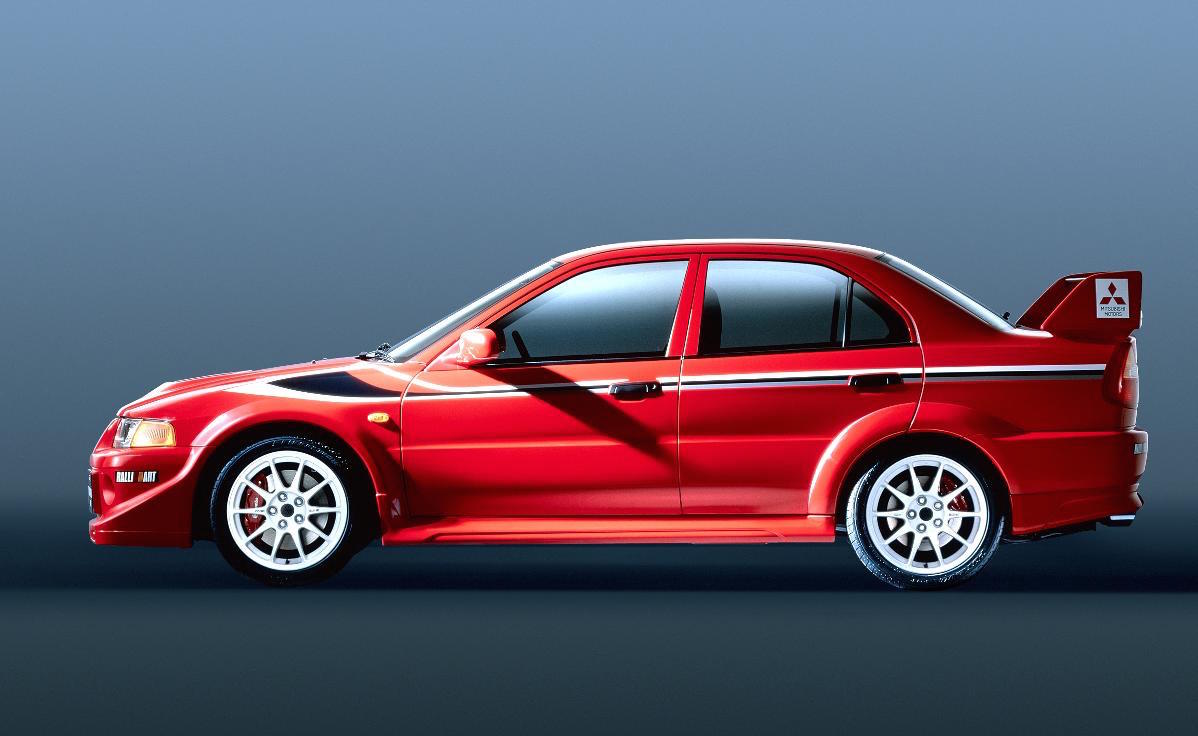
This was also the generation where Mitsubishi released a Tommi Mäkinen special edition to celebrate his four consecutive wins in the World Rally Championship. The car benefitted from a faster-responding titanium turbo, a front strut brace, and the steering rack found in the RS model. It also looks wider and sits 10mm lower over larger wheels and tyres.
Weight: 1365kg
Power: 276bhp @ 6500rpm
Torque: 275lb.ft @ 3000rpm
Evolution VII (2001)
Weight: 1400kg
Power: 276bhp @ 6500rpm
Torque: 282lb.ft @ 3000rpm
Evolution VIII (2003)
Weight: 1410kg
Power: 276bhp @ 6500rpm
Torque: 290lb.ft @ 2500rpm
Evolution VIII MR (2004)
Based on the Lancer Cedia body style, this variant introduced a new aluminium roof.
Weight: 1400kg
Power: 282bhp @ 6500rpm
Torque: 294lb.ft @ 2500rpm
Evolution IX MR (2005)
Take the IX MR in FQ-360 spec and you get 366bhp with 363lb.ft of torque, complete with six-speed manual gearbox. It also features MIVEC variable valve timing, as well as Super-Active Yaw Control using a planetary gear set, meaning for quicker transfer of torque.
Weight: 1400kg
Power: 282bhp @ 6500rpm
Torque: 289lb.ft @ 2500rpm
Evolution X (2008)
The EVO name kinda tanked a little with the last evolution; it just wasn’t as special as it once was. The introduction of the limited-edition FQ-400 variant, though, brought some of the rawness back that this particular model was missing, featuring wider tracks and lower and stiffer suspension, along with a new twin-clutch gearbox and Brembo brakes. The revised Active Yaw Control technology featured on the X varies torque between the left and right wheels, allowing for maximum traction when cornering.
Weight: 1560kg
Power: 290bhp @ 6500rpm
Torque: 300lb.ft @ 2500rpm
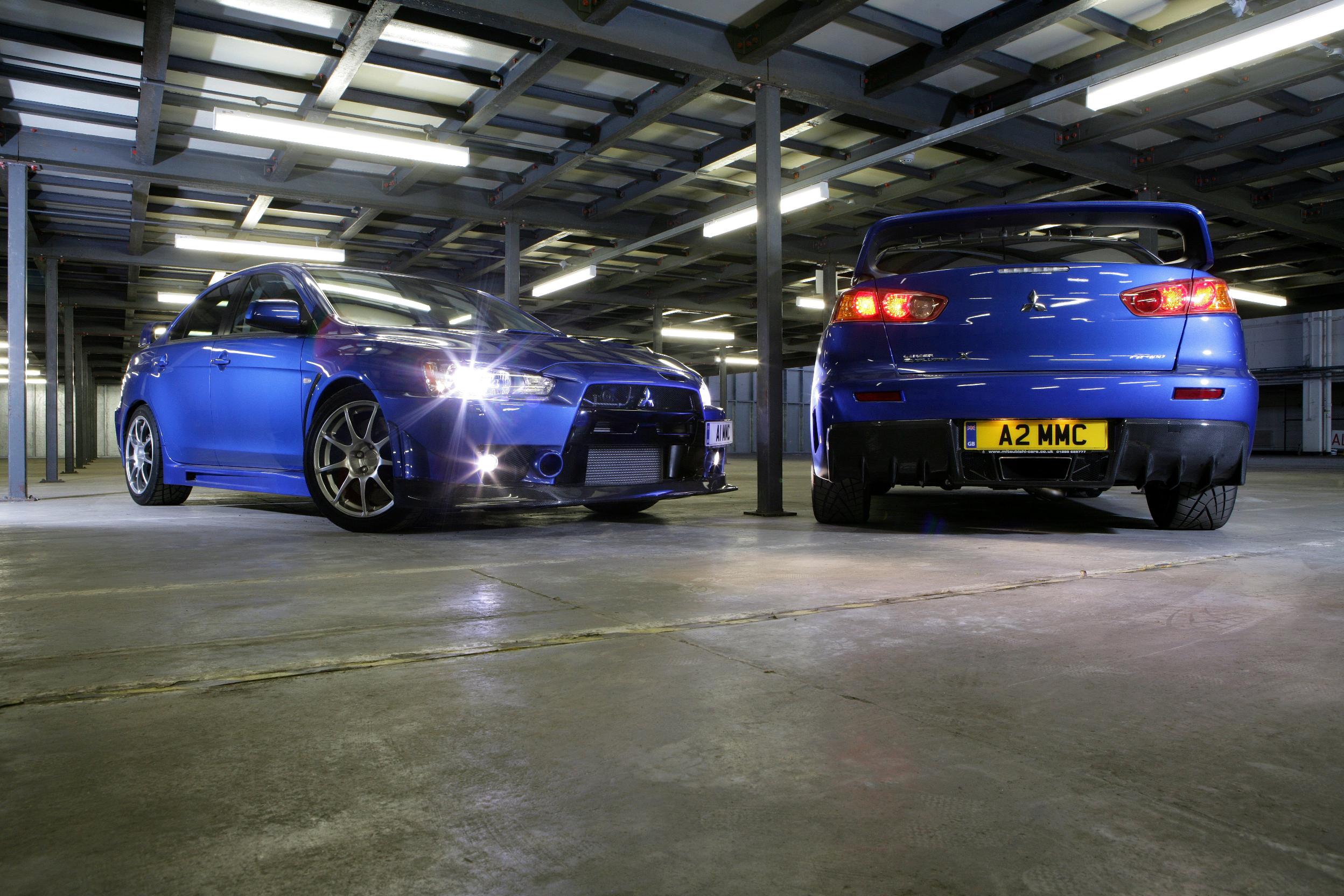
CLICK TO ENLARGE










